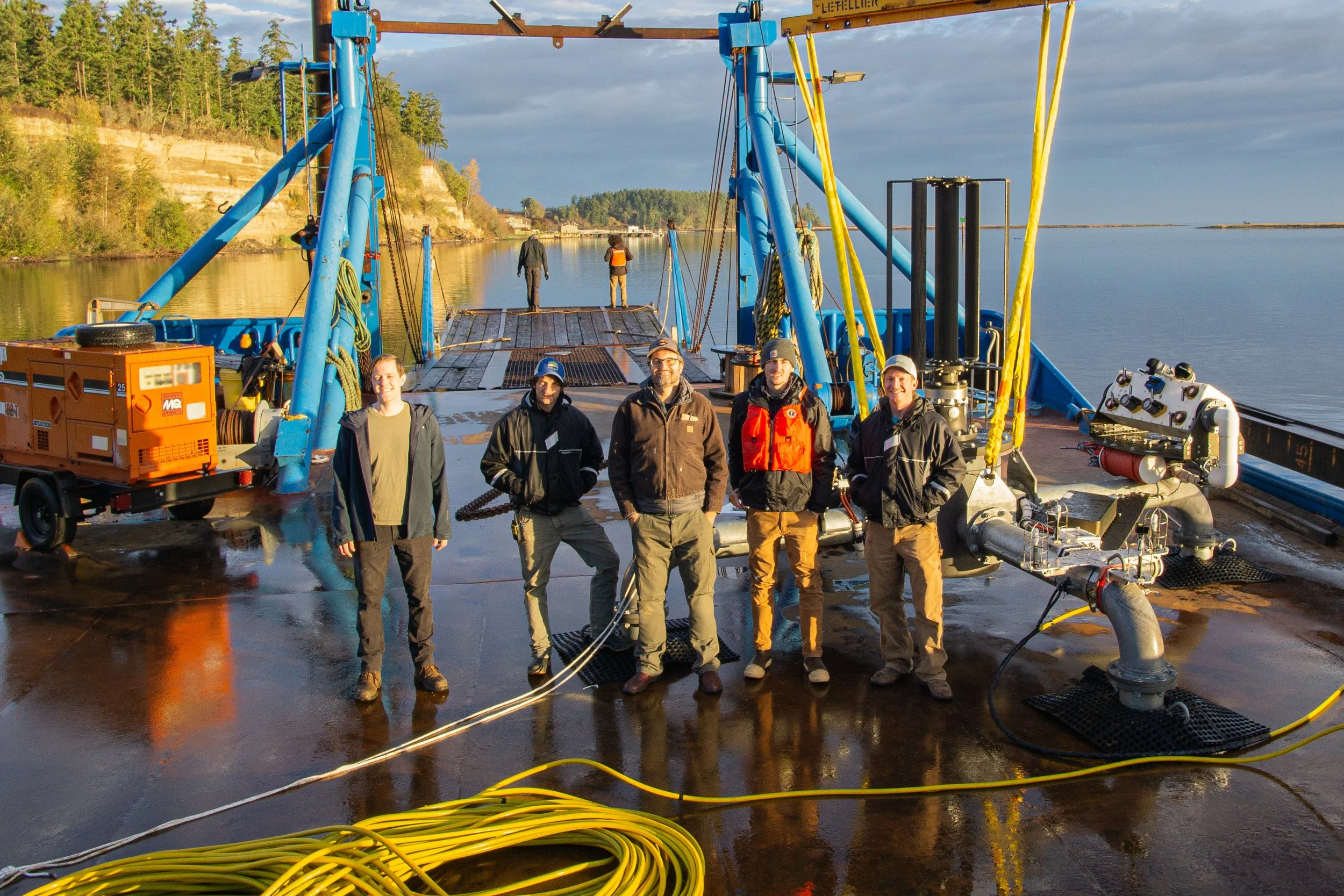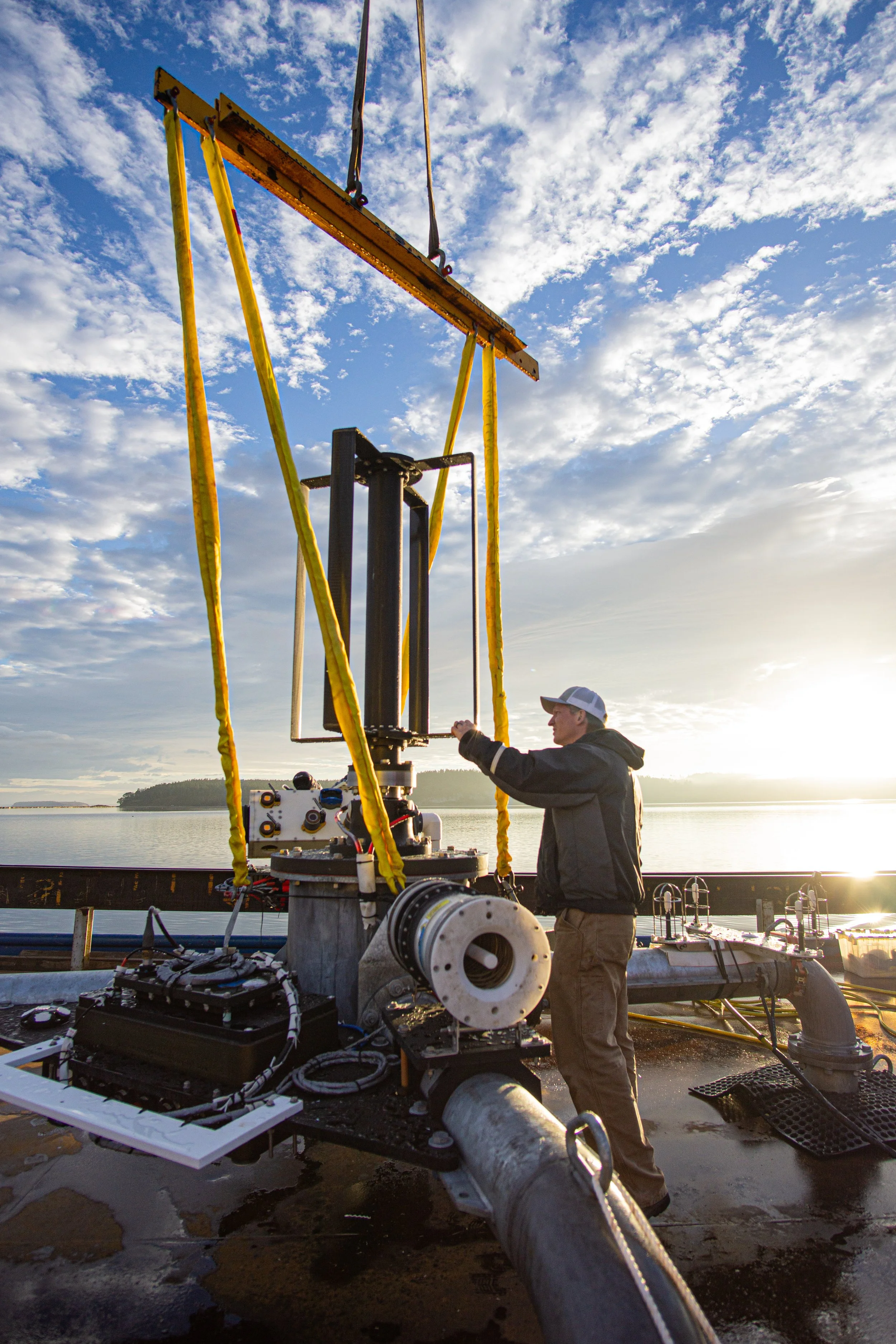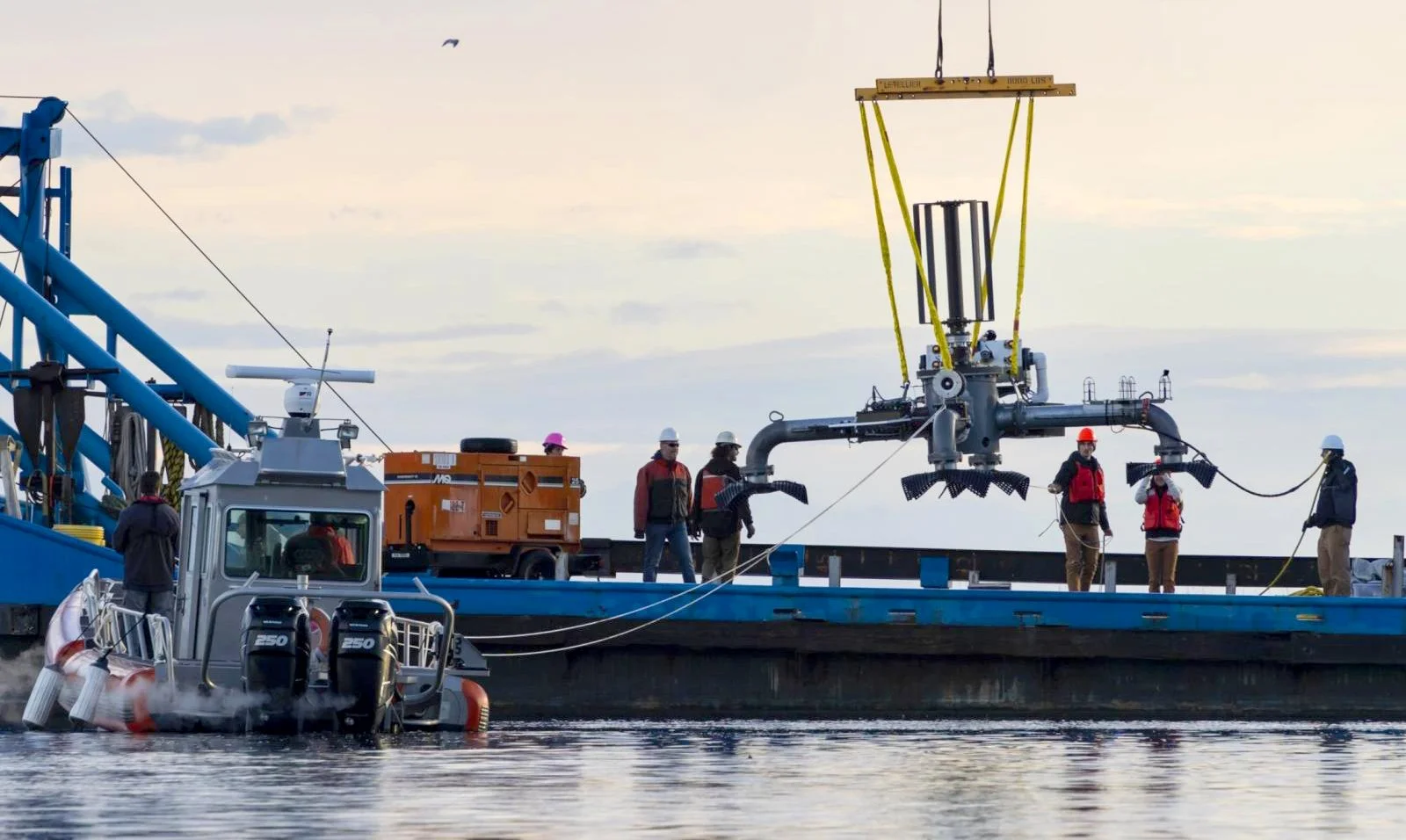MARINE ENERGY
Monitoring the Tough Environments of Tidal Energy with MarineSitu’s Durable System
PROJECT PARTNER:
Pacific Northwest National Laboratory
& University of Washington
Built for the toughest marine environments, MarineSitu’s monitoring technology helps researchers get a clear look at tidal energy’s ecological impact—without missing a moment.
Bringing The Ocean’s Forces Into Focus
The ocean is relentless, and so is the search for new clean energy sources. Tidal energy holds promise for its reliable, renewable power generation, but critics point to an unanswered question: how does it affect marine life?
For researchers at Pacific Northwest National Laboratory (PNNL) and the University of Washington’s Applied Physics Lab (UW-APL), answering that question meant keeping an unblinking eye underwater, recording and analyzing how fish and other organisms behave around an active tidal turbine. It’s a critical step in proving that tidal energy can be effective and environmentally responsible.
Monitoring marine life in the open ocean is notoriously difficult. Powerful currents, shifting sediments, and endless biofouling can result in untenable maintenance costs and unreliable data. Common methods require researchers to sift through endless hours of disjointed footage, manually identifying obscured moments when sea life may have interacted with a turbine. Researchers needed a better way—a system that could withstand months in a harsh marine environment, capturing consistent high-quality footage in all conditions and automatically detecting marine life interactions.
“The impact is clear. Our experience is that outputs from MarineSitu models generally took considerably less time to review [than manual] with some days requiring as little as an hour or two. As opportunities to gather and analyze more data occur we anticipate the gains will be even more significant.”
Chris Bassett
Research Scientist/Engineer Principal
University of Washington
Applied Physics Laboratory
Smarter Monitoring in Extreme Environments
A spinout from UW-APL, MarineSitu had already been building durable, long-term underwater monitoring solutions with applications like this in mind. Their Adaptable Monitoring Package (AMP) was exactly what PNNL and UW-APL needed: a reliable high-resolution camera and sensor system tough enough to survive the high currents and corrosion of a tidal energy site at a low cost.
But this wasn’t just about installing cameras and pressing record. MarineSitu worked closely with the research teams to create custom machine-learning models that could recognize and track ocean life as it moved through the turbine’s field of influence. The AMP didn’t just collect data, it made sense of it, using custom detection models to pull out objects of interest while ignoring irrelevant information, reducing the volume of data requiring review significantly.
“Fouling mitigation solutions proved extremely effective for the system. All components without anti-fouling measures were recovered with marcoalgea and barnacles, with levels of fouling consistent with expectations for the 141-day deployment in the region. The mechanical wipers kept the optical ports entirely free of fouling throughout the deployment and UV lights successfully mitigated fouling observed on acoustic sensors in prior deployments.”
Chris Bassett
The system was built to handle everything the ocean churned up
Imaging sonars provided visibility even in murky water, while antifouling measures—wipers and UVC lights—kept camera lenses, lights, and imaging sonars clear for months at a time. And because the AMP continuously improved its machine-learning models, the longer it operated, the smarter it became.
Image: The MarineSitu camera and wiper are specifically designed to keep clean during long-term deployments.
A Clearer Picture of the Future
With MarineSitu’s reliable technology in place, these research teams finally had the consistent data they needed without the headaches of traditional monitoring. Instead of piecing together disparate footage, they could focus on analyzing key behavioral patterns, identifying risks (or the lack thereof), and refining best practices for tidal energy development.
This project didn’t just provide answers, it set the stage for the entire tidal energy industry. The data collected by the AMP and MarineSitu’s custom model development will enable PNNL and UW-APL to submit critical biological activity and turbine interaction findings to research publications and shape much-needed future regulations. These insights help ensure that tidal turbines can generate power without disrupting the delicate balance of marine ecosystems.
Beyond MarineSitu’s durable equipment delivering unmatched reliability and continuous uptime in demanding marine environments, what truly stood out to the PNNL and UW-APL teams was MarineSitu’s responsiveness. Their ability to swiftly provide data, deliver real-time updates, modify system operations and highlight key events set them apart—not just as a technology provider, but as a trusted partner in advancing tidal energy research.
For PNNL and UW-APL, the partnership with MarineSitu was about more than just efficiency. It was about progress through collaboration. With better monitoring comes better understanding, and with better understanding comes the opportunity to build a cleaner, more sustainable energy future—one where technology and nature don’t have to be at odds.
As tidal energy continues to develop, MarineSitu’s durable technology ensures that researchers and regulators have the insights they need, no matter how rough the waters get.
Uptime of MarineSitu system for this project exceeded
96%
throughout the deployment
A curious harbor seal is caught on camera by the ML models running on the AMP.
MarineSitu’s AMP attached to the tidal energy lander, ready for deployment in Sequim Bay, WA.
Strobe and rotator testing on the AMP before releasing the deployment tether from the tidal energy lander.
MarineSitu’s AMP immediately after recovery from the 141 day marine deployment. All cameras, lights, and imaging sonars remained clear because of our state-of-the-art antifouling technology.
PNNL highlights MarineSitu’s role in analyzing data from the first tidal turbine deployment in the Pacific Northwest, tracking performance and environmental interactions.
Read article here







